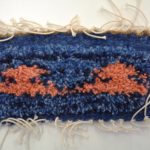
By Daisy Graham, first year student, MPhil Textile Conservation.
One of the courses that we take in the first semester is called Understanding Textiles. From spinning to sprang, it provides insight into the many different and varied processes involved in creating textiles. We look at processing and spinning raw fibres, woven and unwoven structures, surface decoration and finishes, and, lastly, cut and construction. They say that the best way to learn is by doing, and so, part of the assessment involves choosing a technique, creating a poster to describe it and producing a sample.
I chose to look at Turkish pile carpet weaving. Before starting at the CTC, I volunteered with the textile conservation department at the Burrell Collection and was involved in a project photographing their fabulous collection of Islamic carpets. The rich assortment of colours, patterns and textures I came across inspired me to attempt the technique myself.
Pile carpet weaving involves alternating several rows of plain weave with single rows of “knots” which form a fluffy, textured pile on one side. The structure is beaten down tightly so that the knots are trapped between the rows of plain weave, and the plain weave becomes invisible behind the rows of knots. There several varieties of knot, but the one most frequently employed in the Turkish region is the “ghiordes” or symmetrical knot.
The first step in creating my sample involved warping the loom using cotton thread. Carpets are woven on large, vertical tapestry looms – as my sample was considerably smaller, I used a wooden frame.
For both the weft and the knots (the supplementary weft), I used wool. The pattern I chose, inspired by a border design typical of Turkish carpets, comprised three colours – dark navy/black, blue and pink. From each colour, I cut single strands of around three inches and sorted these into groups of three strands for each single knot. For the weft, which forms the background only, I used two strands of blue wool. Using a supplementary weft that is slightly thicker than the weft helps to ensure that only the pile is visible on the right side.
I began by weaving several rows of plain weave to form a base. Starting two to three warp threads in from the edge, I picked up two warp threads and inserted three strands of the wool, loosely twisted together, over the top and pulled the ends through the middle. After constructing a row of knots, I added two rows of plain weave.
Once the sample was complete, I trimmed down the pile to reveal the pattern. The pattern turned out a bit more squashed than I had intended – when drawing out the design on graph paper, I had not taken into the account the fact that the structure condenses considerably when beaten down.
However, overall, I was happy with my first attempt and enjoyed the experience of trying something new. Though time consuming, there was something very relaxing about using my hands to tie each individual knot without the help of any tools.
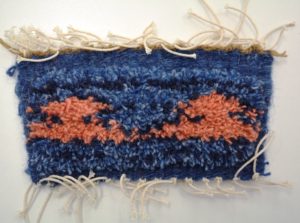
If you want to find out more here are some resources to look at:
Denny, Walter B. How to Read Islamic Carpets. New Haven & London: Yale University Press, 2014.
Purdon, Nicholas. Carpet and Textile Patterns. London: Laurence King Publishing, 1996.
Zipper, Kurt and Claudia Fritzsche. Oriental Rugs Volume 4:Turkish. Woodbridge: Antique Collector’s Club Ltd., 1995.


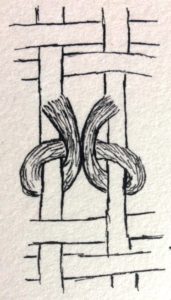
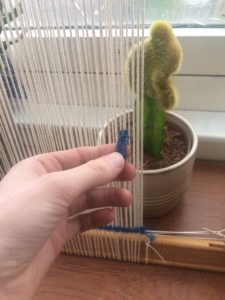
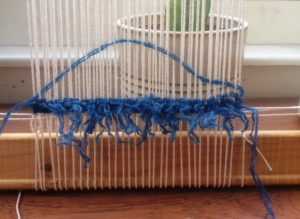

This was so interesting, I forward some of these reports to various people in the tex tile and museum world, hope this is OK? Best wishes for a lovely Christmas, Simon and Dawn